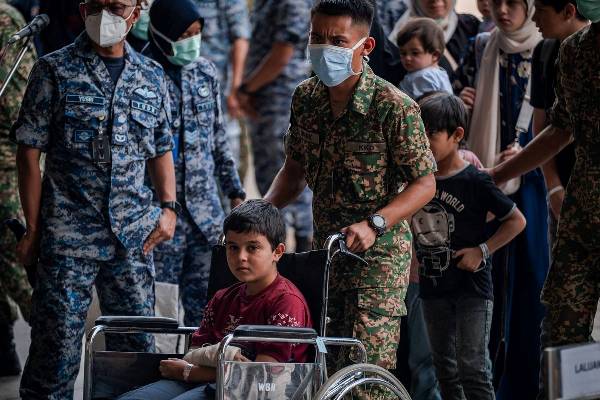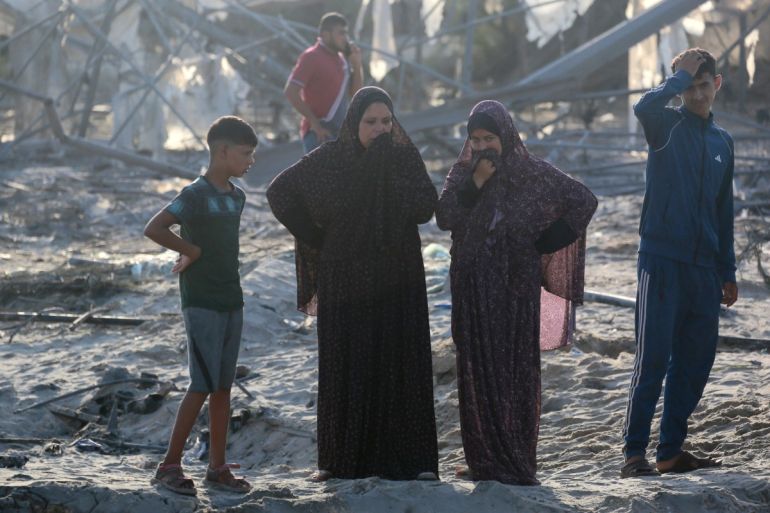What truly worries Israel is not the radicalization of Muslim societies, but the rise of Islamic politics to represent a rational, mainstream political discourse. It threatens Israel because it could rally many Arabs around one cohesive political agenda, and repositions Palestine, once more, as central to what many Muslim intellectuals refer to as the “Islamic Awakening”.

Senior Hamas leader Ismail Haniyeh (R) kisses the head of Egyptian Muslim brotherhood leader Mohammed Badie before their meeting at the headquarters of the Muslim Brotherhood movement in Cairo December 26, 2011.
THERE was an unmistakable hint of triumph in the comments made by Ismail Haniyeh, Prime Minister of the elected Hamas government in Gaza when he was hosted by Mohammed Badie, Supreme Guide of Egypt’s Muslim Brotherhood.
Both leaders said what would be expected of them under these circumstances. Haniyeh asserted that his movement’s “presence with the Brotherhood threatens the Israeli entity,” and Badie reaffirmed the Brotherhood’s commitment to “issues of liberation, foremost the Palestinian issue” (MENA and AP, December 26).
It is very telling that Haniyeh’s first official visit outside Gaza as prime minister was to Egypt’s Muslim Brotherhood headquarters in Cairo's Moqattam district. He shared his message – of resistance against Israeli occupation, national unity with rival Fatah and reaching out to Muslim countries – and then resumed his regional tour.
Since 2006, Hamas has attempted, but largely failed to win the approval of governments in Muslim-majority countries. Muslim solidarity was the thrust of Hamas’ foreign policy, aimed at lessening Palestinian political and financial dependence on the US and other Western governments. It failed because, as it turned out, US financial and political leverage is too overpowering and far-reaching for a relatively small movement like Hamas to singlehandedly challenge. But, as Haniyeh himself reiterated, times are changing
In the first and second rounds of Egyptian elections, the Brotherhood’s newly created Freedom and Justice party won more than 35 percent of the vote. The electoral success was hardly an anomaly. The Islamic Nahda party, which formed the first post-revolutionary government in Tunisia, won more than 40 percent of the vote last October. Morocco’s Justice and Development party won the November elections and the Islamic leaning of Libya’s new political set up is all too palpable. There have been marks of Islamic political influence in other countries across the region.
The reformation of the political landscape in the Arab region has tempted many to infer polarizing, if not frightening conclusions. Israeli army Home Front Command Chief Major General Eyal Eisenberg was one of the first in Israel to refer to these developments as an Arab Spring turning into a “radical Islamic winter”. He said, “This leads us to the conclusion that through a long-term process, the likelihood of an all-out war is increasingly growing” (Arutz Sheva, September 5).
However, what truly worries Israel is not the radicalization of Muslim societies, but the rise of Islamic politics to represent a rational, mainstream political discourse. It threatens Israel because it could rally many Arabs around one cohesive political agenda, and repositions Palestine, once more, as central to what many Muslim intellectuals refer to as the “Islamic Awakening”.
Israeli fear mongering aside, the US – Israel’s main benefactor – must find ways to co-exist with the new political arrangement. Other Western governments too “will have to adapt to a power shift they have long sought to prevent,” wrote Roula Khalaf and Heba Saleh in the Financial Times (December 28).
For Israel, however, the transformation in regional politics will prove unbearable. It is not Tunisia’s Nahda party that Israel is most concerned about, of course; it is Hamas. This is partly what compelled Haniyeh to venture out of Gaza. As the US is hoping to control, if not manage, the rise of Islamic parties, Hamas aims at ensuring a primary position for Palestine – as seen through the prism of the Islamic movement – in the region’s new political landscape.
There is little doubt that Hamas’ rise to political prominence in 2006, and the numerous subsequent attempts at isolating and destroying it will influence new Islamic parties in various Arab countries. Hamas’ ability to survive has certainly registered among new Muslim politicians in Egypt and elsewhere. Now, with the early fruits of the Egyptian revolution being plucked by Islamic parties, Hamas is guardedly making its move. Hamas is a “jihadi movement of the Brotherhood with a Palestinian face,” said Haniyeh in Cairo.
A quick look at the roots of the Muslim Brotherhood in Palestine shows that Haniyeh was hardly exaggerating. Since the Society of the Muslim Brotherhood was founded in Ismailiyya, Egypt in 1928 by Hasan al-Banna and a few others, it quickly found in Palestine a rally cry to unite Muslims through the entire region. The first link between the movement and Palestine was formed in 1935, when Abd al-Rahman al-Banna (the founder’s brother) visited Palestine and met with the Mufti of Jerusalem, Haj Amin al-Husseini.
The Brotherhood became visible during the revolt of 1936, as they communicated the Palestinian message with an Islamic tone to the rest of the Arab world. The cause of Palestine promptly became the central mission and calling of the Brotherhood, as Hasan al-Banna himself headed the newly founded General Central Committee to Aid Palestine.
More, in April 1948, when most Arab governments delayed in partaking in the defense of Palestine, the Muslim Brotherhood deployed three battalions of volunteers. Estimates of the number of Brotherhood volunteers in Palestine during the war and the subsequent Nakba vary, but Hasan al-Banna himself noted, in March 1948, that the movement had approximately 1,500 volunteers in Palestine.
The relationship between the Brotherhood and Palestine had it ebbs and flows, but the rapport was never completely severed. Even before Hamas was officially established 1987, the movement functioned under various classifications, all directly affiliated with Egypt’s Brotherhood.
The recent Cairo meeting between Haniyeh and Badie could be understood within that historical context, representing a triumphant reunion and possibly open coordination. This would once again rejuvenate the Brotherhood’s Palestine connection, and grant Hamas greater political leverage – after years of isolation, and despite the current political turmoil in the region.
Of course, Hamas’ challenges are many and growing. Leading among them is Israel’s violent escalation in Gaza, and the unremitting US pressure. Still, it is expected that Hamas’ political message and outlook will continue to find balance between Palestinian exceptionality and the more inclusive Arab and Islamic framework.
By venturing out of Gaza, Haniyeh is hoping to expand the diameters of the Palestinian Islamic movement into Egypt and beyond – thus reclaiming what Hamas once considered ‘the strategic depth’ of the Palestinian cause. While such a push failed to attain its objectives in 2006, 2012 is a brand new year.
Post Disclaimer | Support Us
Support Us
The sailanmuslim.com web site entirely supported by individual donors and well wishers. If you regularly visit this site and wish to show your appreciation, or if you wish to see further development of sailanmuslim.com, please donate us
IMPORTANT : All content hosted on sailanmuslim.com is solely for non-commercial purposes and with the permission of original copyright holders. Any other use of the hosted content, such as for financial gain, requires express approval from the copyright owners.
 Sri lanka Muslims Web Portal Sri Lanka Muslims News Center
Sri lanka Muslims Web Portal Sri Lanka Muslims News Center



